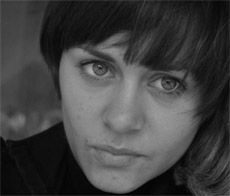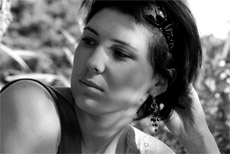Lectures
25.02.2011 (Friday)
19.00, Alpha Center, cinema Helios (free)

Alexander Jatczak,''FASHION AND DANCE. The dance, which is subordinated to the fashion, and the one which outlines the fashion “
The dancers initially benefited from the clothing, which has developed by a society in accordance with the prevailing fashion or later, with the guidance of designers and big brands. Already in the late nineteenth century, and especially in the decades of the twentieth century with the popularity of certain dances, it is DANCE stimulated changes in fashion. Initially, it was only a carrier of certain decorative motifs, or items of clothing to gradually determine its fashion, and even inspire the entire complex clothing styles quickly adopted by the broad masses of fashion victims .. W
orkshop: lecture supplemented by photographs, films, discussions, aim to provide the most interesting examples from history, to show when a group of dressed dancers became the prevailing fashion in general. To show how culture-and inspiring phenomenon is dance.
Alexander Jatczak, art historian, teaches history and theory at the Academy in Warsaw. She is passionate about dance, art, fashion and culture. He writes, among others Magazine TRENDY dance / fashion / music, M MAG moda.com.pl, Fashion Market.
27.02.2011 (Sunday)
15.45-17.15, BOK, Café Fama (free) 
Anna Królica,''the Dictate of the body, which is a contemporary dance scene''
In modern choreography more and more developers are moving away from putting to the stage known literary plots and virtuosic performances of dancers, primarily they are focused on the physicality of performers. It grows almost to the level of the main "hero" of the performance. Viewers see how they react to the dancers body fatigue, change in temperature, shock or other stimulations. This shift toward carnality of performer, was initiated by the premiere of the famous German performance of Sasha Waltz & Guests Körper (Body). Somatic subject suddenly began to be very popular among choreographers and actually dominated the contemporary dance scene. So let's look at this new trend which we are proposed by well-known contemporary artists: how does the dance look like from their perspective?
Anna Królica, theater expert and specialist in Russian studies.President of PERFORMA Foundation, co-founder and editor of www.nowytaniec.pl. Currently a doctoral student at the Jagielloński University. She has given orginal classes of the dance theater at the Jagiellonian University. In addition to being a dance critic, she is interested in the theory and history of dance, especially in the Polish and German context. She published in "Contexts", "Theatre", "Stage directions","Scene" and www.dwutygodnik.com, www.kulturaenter.pl. Currently working on the issue of memory and body at Tadeusz Kantor ‘s Death Theatre and Tanztheater Wuppertal of Pina Bausch.
